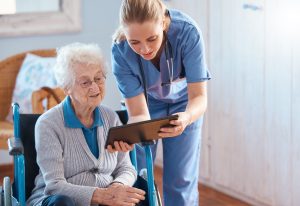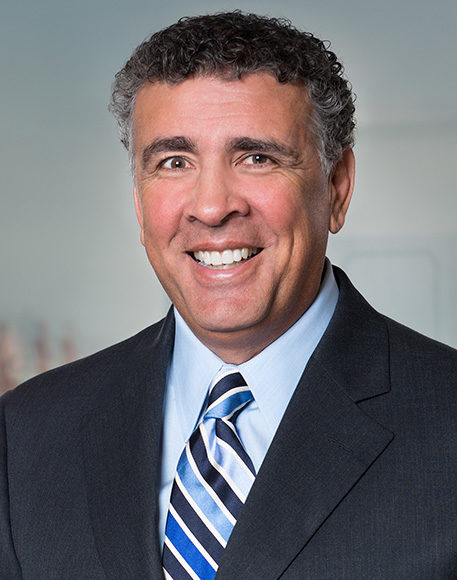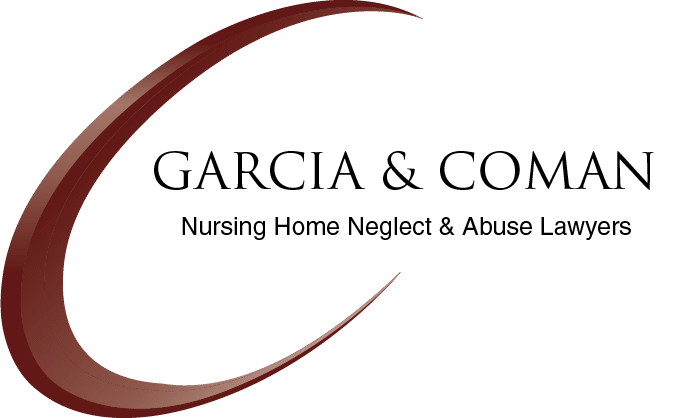Technology in Elder Care: Benefits, Risks, and Legal Implications
 The use of technology in elder care is changing, and changing quickly. New and improved tools offer promises of better quality of care and better quality of life for both seniors and caregivers. It’s true that wearable health monitors and smart home devices have the ability to enhance safety, provide greater independence, and facilitate communication.
The use of technology in elder care is changing, and changing quickly. New and improved tools offer promises of better quality of care and better quality of life for both seniors and caregivers. It’s true that wearable health monitors and smart home devices have the ability to enhance safety, provide greater independence, and facilitate communication.
Unfortunately, as with any innovation, the benefits of these advancements come with risks and legal implications, especially when it comes to protecting vulnerable elders from abuse and neglect.
In exploring the benefits and pitfalls of technology in elder care, we address its role in elder care abuse prevention and detection, in addition to legal considerations surrounding nursing home abuse and neglect. Most importantly, we discuss how families and caregivers can make informed decisions in the midst of this era of innovation.
Potential benefits of technology in elder care
There are plenty of benefits to using technology in elder care, particularly for older people living in nursing homes.
Enhanced safety and health monitoring
Devices and gadgets like fall detectors, GPS trackers, and vital sign monitors can alert caregivers and medical professionals to emergencies or changes in health status. For example, a wearable sensor can detect irregular heart rhythms or sudden movements that may signal a fall. These live alerts can be lifesaving, reducing the severity of injuries by ensuring swift medical attention.
Increased independence and quality of life
Smart home technology allows control of lighting, temperature, and appliances with voice commands or smartphone apps, making ordinary tasks easier. Video calling platforms help maintain social connections, reducing isolation and, in turn, lessening the risk of cognitive decline or depression. When technology like medication reminders and automated scheduling is used, it can help elders effectively keep up with their routines and manage health conditions.
Improved communication and coordination of care
Electronic health records (EHRs) and remote monitoring systems facilitate communication between healthcare providers, caregivers, and family members. This connectivity helps ensure that care plans are followed as they should be and that any health concerns are promptly addressed. The integration of these systems makes it possible to give seniors more personalized care, adapting as their needs will almost certainly evolve.
Risks and challenges of technology in elder care
Technology, even with its undeniable benefits, also introduces new risks.
Privacy and data security concerns
Elder care technologies commonly collect sensitive personal information, including medical records. If data isn’t adequately safeguarded, hackers or anybody with the necessary credentials could easily access it. Privacy violations can have serious consequences, such as identity theft or misuse of information.
Older adults may not fully understand, or care to understand, how their personal data is being used, shared, or archived. Considering the complexity, ethical questions arise due to a lack of or insufficiently explained informed consent.
Risk of increased elder abuse
Technology can facilitate new forms of elder abuse. For instance, caregivers with access to monitoring devices could misuse them to surveil elders inappropriately. Furthermore, there is concern that over-reliance on technology might reduce human interaction, potentially leading to abuse or neglect going unnoticed. Abusers who are looking to take advantage may exploit technological gaps or weak security protocols to manipulate or isolate this vulnerable population.
The digital divide and accessibility issues
Not all seniors are comfortable using advanced technologies, which can understandably lead to frustration or exclusion. Some devices may not even be designed with accessibility in mind, limiting their usefulness. This growing digital divide stresses the need for caregiver education and tools that prioritize elder-friendly design.
The future of elder abuse and technology: Is it good or bad?
The future might be both. The role of technology in elder abuse is multifaceted and constantly evolving. On the one hand, it offers powerful tools that can detect and possibly prevent abuse. Consider video monitoring systems that document mistreatment or data analytics that identify unusual patterns that are indicative of harm. Moreover, AI is now being used to flag anomalies in care or behavior, allowing for earlier intervention.
Conversely, technology can easily be weaponized by caregivers turned abusers. Remote access to smart home systems could be used to isolate or intimidate unsuspecting seniors. Insufficient oversight of technology may allow abuse to go unnoticed, underreported, or unreported. Technological advancements are happening at an exponential pace, and ultimately, creating or expanding gaps that abusers might exploit.
To paint a more promising future of the intersection of elder abuse and technology, technology must incorporate safeguards that protect the dignity of seniors. Safeguards include, but are not limited to:
- Transparent policies on data use
- Consent protocols
- Ongoing monitoring of technology’s impact
- The continuous education of caregivers and families
Stakeholders should collaborate to develop standards that maximize safety without infringing on privacy.
Possible legal implications in nursing home abuse cases involving technology
More and more, nursing homes are integrating technology into their everyday routines, raising legal questions about when and if abuse or neglect occurs.
Evidence collection and privacy laws
Video surveillance or electronic records can be critical in nursing home abuse lawsuits. However, privacy laws like HIPAA or HITECH regulate how information can be collected, shared, and stored. These rules must be carefully navigated in order to use technology-based evidence appropriately.
Liability and standards of care
By law, nursing homes are required to provide a safe environment and protect residents from harm. When technology is used incorrectly or carelessly, facilities may be held responsible for any resulting injuries. Suppose a nurse ignores alerts from monitoring devices that a resident has fallen due to sudden numbness in limbs or loss of balance due to a stroke. The delayed treatment due to negligence may be the basis of a legal claim for failure to uphold the duty imposed on the nursing home and its staff.
Courts are increasingly recognizing that technology is an aspect of the modern standard of care. That being said, facilities must responsibly maintain and use these tools.
Consent and autonomy issues
Nursing home residents must understand and agree to monitoring or data collection, especially if cognitive impairments are present. Not obtaining the correct permissions can expose nursing homes to invasion of privacy or battery claims. To minimize or lessen disputes, it’s vital for nursing homes to have clear, consistent communication and policies (e.g., privacy policy, technology use, etc.).
Taking control: how families can protect elders in a tech-driven world
Families play a key role in the use and oversight of technology in elder care. Those with people they care about in nursing homes should stay informed about devices, play an active role in decision-making, inquire about privacy matters, and generally stay engaged in their care instead of just relying on high-tech systems and gadgets.
If you think someone is being neglected or abused because of a facility’s usage of technology, our law firm is here to help you understand these complexities and keep your loved ones safe. To schedule a consultation, you can call, text, or live chat with Garcia & Coman, Nursing Home Neglect & Abuse Lawyers to help ensure your loved one’s dignity, rights, and safety are preserved in this quickly changing care landscape.

Stephen M. Garcia represents victims of elder and nursing home abuse and is known as one of the leading civil litigators in the country. He is Senior Partner at Garcia & Coman, where the firm’s practice is focused on elder abuse, nursing home abuse, and wrongful death of the elderly.
Find out more about Stephen M. Garcia

